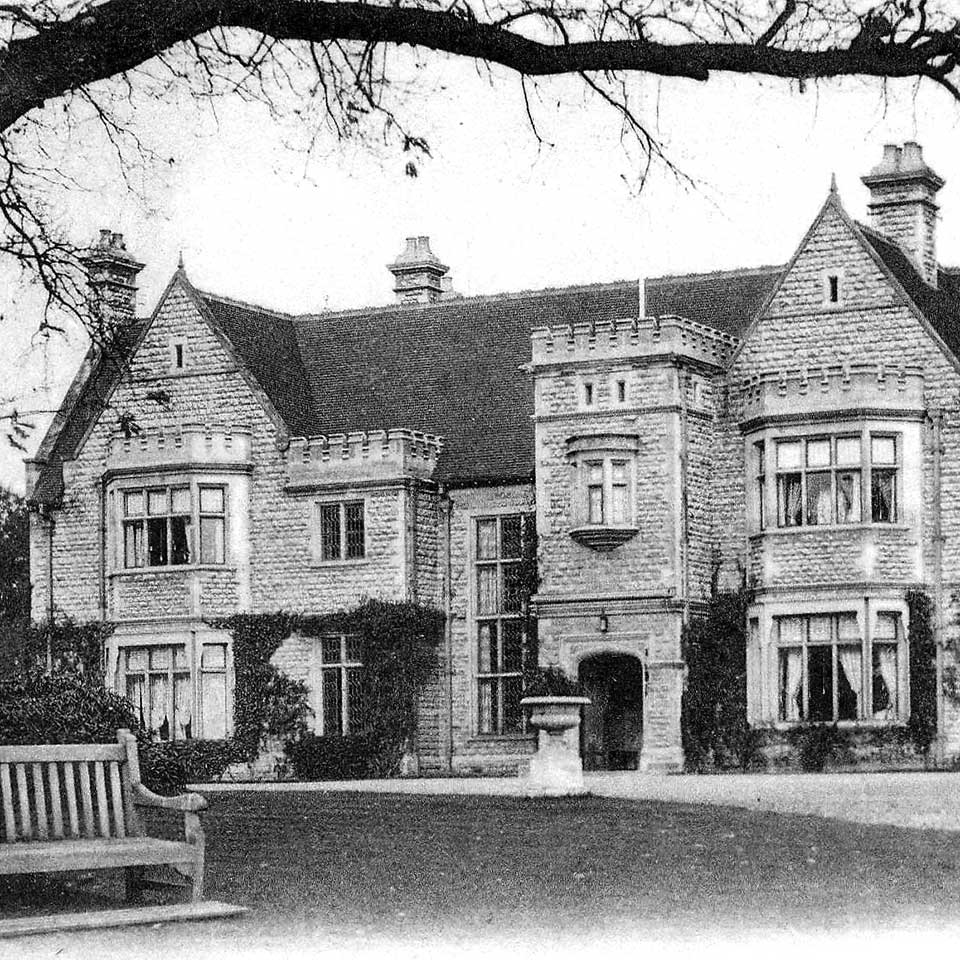
Bronham House: rules were strict, and a resident was not allowed to go outside to visit her aunt – Image: Nick Kingsley/Charles Hind Postcard Collection/Flicrk/CC BY 2.0
The “unauthorised absence of a patient from a hospital”, known as absconding, has long been a regular feature in the annual reports of long-stay institutions.
Historically, official records tended to downplay absconding as very rare and the act of only the most troublesome and difficult patients.
At the same time, escape attempts were portrayed by the authorities as genuine causes for concern. Absconding patients were said to be at significant risk of harm, and were also considered potential sources of harm to others.
Official records also emphasised the damage, both emotional and practical, caused to hospital staff, in terms of the work this created and the professional fallout in the wake of escape attempts.
Historians of learning disability David O’Driscoll and Jan Walmsley sought to reframe the official narrative on absconding from long-stay institutions by examining it from the patients’ point of view instead.
Using official documents balanced by oral testimony from patients who had absconded from the Cell Barnes and Bromham House colonies in south-east England, they examined how big a problem absconding really was for the authorities, and why patients felt driven to escape.
Restrictive rules
O’Driscoll and Walmsley found that all attempts even to go outside a long-stay institution were rigidly controlled. Even official leave involved a long series of correspondence between the hospital and whoever the patient intended to visit before it was granted. Often, it was not given at all.
For example, in 1944, Mary Bellamy was refused leave to visit her aunt, as Bromham Hospital authorities believed she was incapable of controlling her sexual instincts.
Like official leave, absconding demanded significant amounts of paperwork. The 1913 Mental Deficiency Act had created a byzantine web of bureaucracy around the control of people with learning disabilities, and those who escaped were no exception.
Penalties for absconding were severe, and extended to punishment not just of the patients themselves but also of anyone assisting in their escape. Staff members who failed to stop their charges getting out could face dismissal.
This tight control over the whereabouts of patients was in part because these institutions relied on them for labour.
Certain trusted patients would help organise and care for other patients, especially when staffing levels decreased after the Second World War. Moreover, patient labour helped to provide institutions with an income.
There were also fears that the institution would be held responsible for any criminal acts committed by their patients while absent.
Showing up the system
More significantly, absconding challenged the very existence of these long-stay institutions.
The official claims that they existed to protect both the patients and the community, and that inmates were infinitely happier and safer in a long-stay hospital than they would be out in the community, were fatally undermined by absconding.
The official response was to dismiss absconding as a failing of a “discontented” or “vicious” individual for whom absconding was just another “challenging behaviour” – an argument that stripped perpetrators of any agency and refused to accept that absconding could be inspired by any genuine grievance.
In reality, absconding was an act of wilful resistance by individual patients for whom life in the institution – whether temporarily or on a more permanent basis – was intolerable.
In the 1981 documentary film Silent Minority, patients at Borocourt Hospital in Reading, kept unstimulated in a bare outside compound for hours on end, attempted to dig their way out. The narrator acknowledged the act by drily noting “one or two still fight the system”.
O’Driscoll and Walmsley found similar examples of attempted escape as a means of “fighting the system”.
“Patient 247”, who spent 44 years at Cell Barnes, absconded because he resented being denied the experiences of “an ordinary life”, such as work and sexual relationships.
Another patient, described as a “professional escaper”, absconded using many and varied methods simply because he wanted to leave and was not allowed.
Margaret Day absconded just the once, when she was moved from Cell Barnes to Bromam House and felt ill-treated and disliked by the ward sister.
These acts of reasonable resistance all ended in failure and punishment.
The only way to successfully abscond was to have a supportive family waiting outside. Although patient “AJD” was forced to return to Bromham House after fleeing in June 1940, his family, who firmly believed AJD was kept at the hospital purely because he was a useful worker, unleashed such a battery of irate correspondence that he was eventually discharged at the chairman’s discretion.
As we reported in Community Living, Alexis Quinn’s successful 2016 escape while under section from both her mental health facility and the UK thanks to the help of her friends suggests that, in some cases, this situation has still not changed.
Further reading and a film: Kelly S, Quinn A. “I escaped from hospital”. Community Living. 2021;34(2): 16-17. www.cl-initiatives.co.uk/i-escaped-from-hospital/ O’Driscoll D, Walmsley J. Absconding from hospitals: a means of resistance? British Journal of Learning Disability. 2010;38(2): 97-102
Silent Minority. 1981. https://www.youtube.com/watch?v=7Qb424HvKSQ





